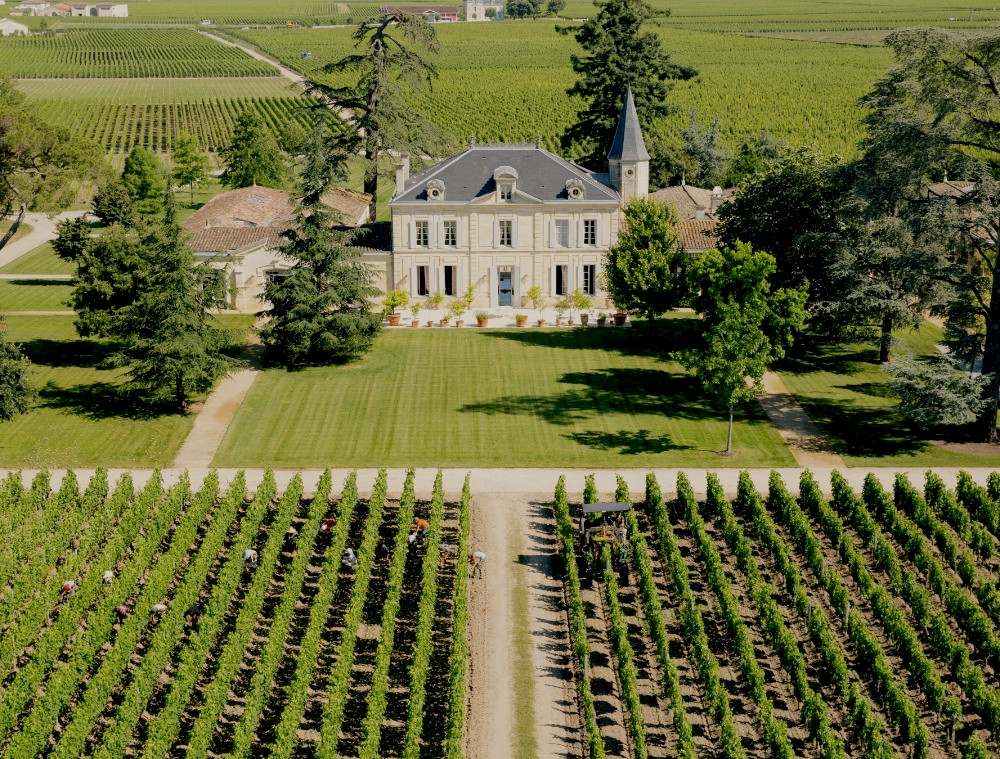2011
6x75cl
DP
£1,123.22

vintage
portfolio
2011
6x75cl
DP
£1,123.22
2018
6x75cl
DP
£1,100.42
2019
6x75cl
DP
£920.42
Produced from 70% Merlot and 30% Cabernet Franc, Petit Cheval is an athletic, muscular cuvee with a beautiful bouquet of finely ground stones - very mineral indeed. The fruit on the palate is bright, clear, clean and precise. There is good texture, but despite the high proportion of Merlot, there is no puppy fat here; this is tense and linear, but ever so graceful. Super-fine tannins here.

Classified as one of the two original 1er Grand Cru Classe “A”s of St Emilion (the other being Ausone), Cheval Blanc is one of the most recognised and revered names of Bordeaux.
Archives prove that vines have been grown on the site of Cheval Blanc since the 15th century. The inception of Cheval Blanc as we know it today can be traced back to 1832, when Jean-Jacques Ducasse, President of the Libourne Trade Tribunal, purchased the core of the holdings. Over the next twenty years, additional purchases from neighbouring Château Figeac completed the 39 hectare vineyard that has remained virtually unchanged.
“Located in the commune of Saint-Emilion, but bordering on Pomerol, the estate consists of 39 hectares divided into forty-five plots. Each one is, to a certain extent, treated like a separate vineyard because of the differences in the age of the vines, grape variety, soil type, etc. The combination of these many facets accounts for Cheval Blanc’s great complexity”.
Bernard Arnault and Baron Albert Frère purchased Cheval Blanc from the Hebrard family in 1998. This proved to be a major turning point. The new owners built on the achievements of Pierre Lurton, injecting a dynamic new spirit as well as much needed financial investment. This is epitomised by the construction of the Christian de Portzamparc designed cellars, which although completed in 2011, still looks futuristic and cutting edge.
“What makes Cheval Blanc so unusual is three main soil types – fine textured with clay, more coarsely textured with gravel, and large gravel with sand – that constitute a veritable patchwork. This singular terroir is made up primarily of clay and large-size gravel in certain plots and sandy soil with smaller gravel in other parts. Some estates in Saint-Emilion have excellent gravelly soil, while others in Saint-Emilion and Pomerol have very good clay soils. Cheval Blanc, on the other hand, is blessed with both types of soil in fairly equal proportions”.
Pierre-Olivier Clouet and Arnaud de Laforcade manage the estate, ensuring that no detail is overlooked. This is the ultimate in precision wine-making, but with a sound philosophical approach and a determination to produce something that they would like to drink. They simply try to reflect their terroir and the climatic conditions of any given vintage as best they can. They don’t try to fight the elements or leave their own mark. Unlike many wines from the surrounding area, they have the challenge and luxury of a variety of terroirs, planted with 52% Cabernet Franc, 43% Merlot, and 5% Cabernet Sauvignon.
“Each plot has its own specific profile due to the age of the vines, surface area, kind of soil, type of rootstock and grape variety, etc. Therefore, it only follows that the wine produced from each plot has its own profile too… The ones from clay soil are powerful with velvety tannin, while the ones from gravel soil are more aromatic and elegant. A blend of both results in a wine that is both powerful and elegant with expressive aromatics as well as the complexity of the greatest wines.”
By blending multiple plots, Cheval Blanc gains complexity. Pierre-Olivier uses a musical analogy. As with an orchestra, the sum of all the components is far more impressive and nuanced than only one section. If one plot is playing out of tune, it is removed, but ideally, as with the 2015, each plot has the potential to bring something unique and build a more multifaceted, more complete expression of Cheval Blanc.
61 St. James's Street, London SW1A 1LZ
Reg. Company No: 68576
AWRS URN: XPAW00000105319
Please do not share with anyone under the legal purchase age for alcohol.
Drink Responsibly www.drinkiq.com
© Justerini & Brooks 2024. All Rights Reserved.